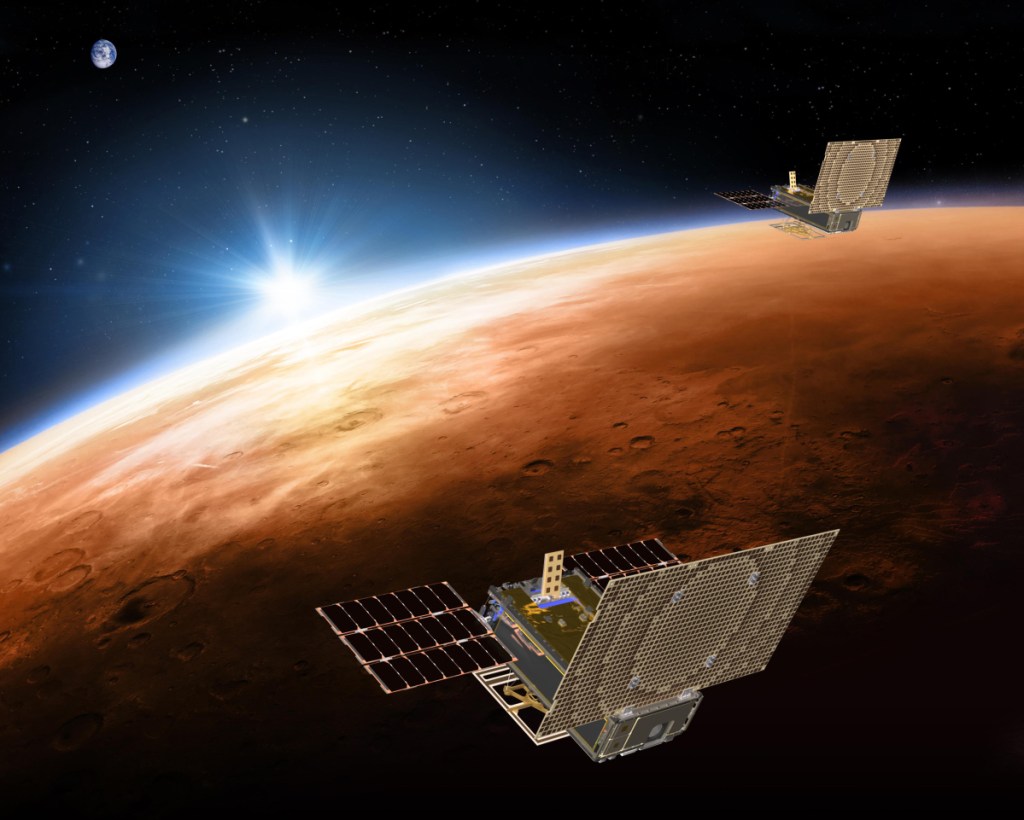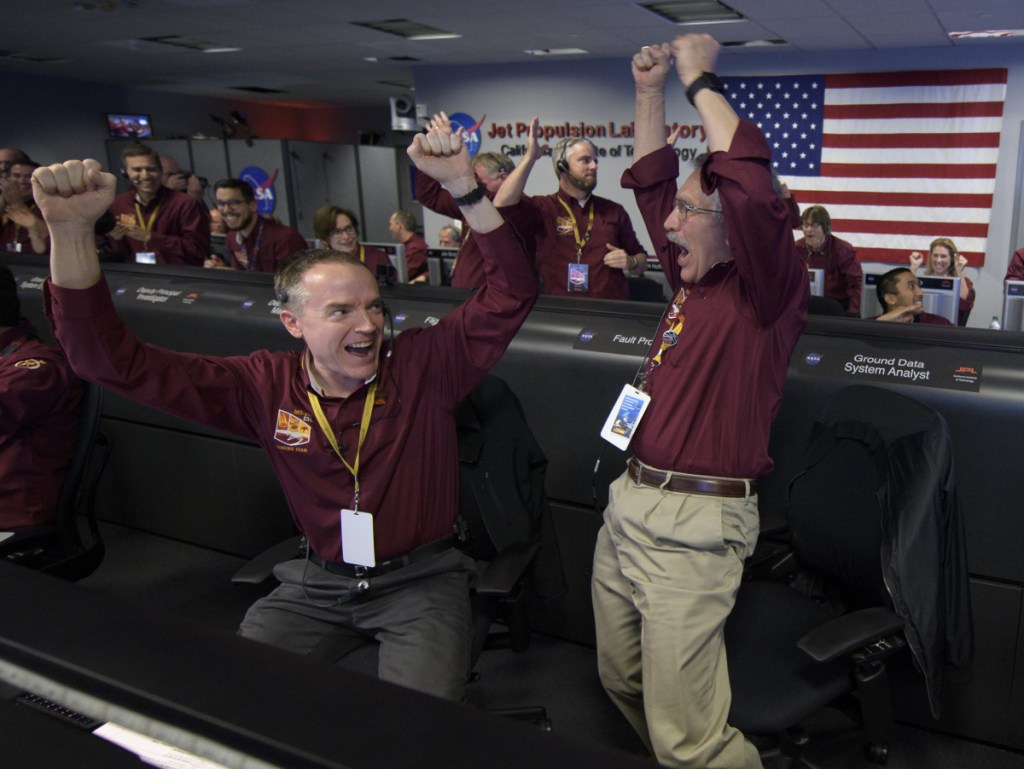With the country boiling from a never-ending string of exasperations, our worst impulses bubbling to the top, let’s take a moment to marvel at what we can do when we are at our best.
NASA’s Insight lander successfully touched down on Mars on Monday a few minutes before 3 p.m. Eastern, ending a journey of more than six months and 300 million miles.
The path to the successful landing, of course, started much earlier than that. It was the eighth successful Mars landing since Viking 1 in 1976, and each mission builds on the one before it.
You can go back even further, too, to the beginnings of the space program, to the first satellites launched nervously into the atmosphere, to the eventual landmark landing of a manned spacecraft on the moon, and to every mission and experiment that came after.
All that experience and success may have over time made space exploration seem routine — oh, look, we landed on Mars again — however, it is anything but. It takes state-of-the-art technology operated by people with high levels of expertise and focus — and even then, only about 40 percent of Mars landings are successful.
Anyone watching this week can see why. Insight entered the Martian atmosphere traveling at about 12,300 miles per hour. It had to do so precisely at the entry angle of 12 degrees; otherwise, it would have either burned up or bounced back into space.
The entry into the atmosphere begins the “seven minutes of terror,” as NASA officials call it, named after the time from entry until landing of earlier Mars missions. In that time, through the use of a parachute and rockets, and with the help of atmospheric drag, the lander dropped from 12,300 mph to 5 mph right before it settled into the soft soil.
InSight, launched in May from Vandenburg Air Force Base in California, landed at Elysium Planitia, a flat, barren landscape from which the lander will begin the first-ever investigation of the interior of Mars, sending images at regular intervals back to NASA’s Jet Propulsion Laboratory.
Working slowly with only those occasional images as guides, NASA operators will over the next few months confirm that InSight is working. Then it will get to work. An arm on the lander will be used to place seismometers on the ground to listen to the planets tremors, or marsquakes — the Red Planet’s equivalent of earthquakes. A separate instrument will burrow 16 feet into the ground.
Together, those instruments will over the course of two years try to tell us something about how Mars formed. In doing so, scientists hope it will also tell us how Earth, a rocky planet just like Mars, may have formed as well.
In that way, InSight is like a time machine, taking us back to see what Earth might have been like millions of years ago, providing elusive answers to our own origins.
It is an amazing accomplishment, one that should be free of rancor and cynicism. When we want to, we can reach the stars.
Send questions/comments to the editors.




Success. Please wait for the page to reload. If the page does not reload within 5 seconds, please refresh the page.
Enter your email and password to access comments.
Hi, to comment on stories you must . This profile is in addition to your subscription and website login.
Already have a commenting profile? .
Invalid username/password.
Please check your email to confirm and complete your registration.
Only subscribers are eligible to post comments. Please subscribe or login first for digital access. Here’s why.
Use the form below to reset your password. When you've submitted your account email, we will send an email with a reset code.